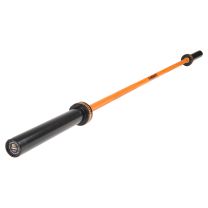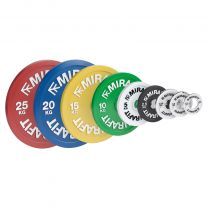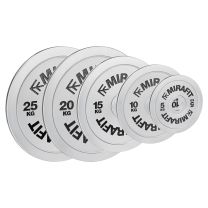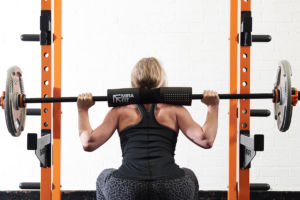How to Do a Barbell Back Squat
How to Do a Barbell Back Squat

Do you know how to do a Barbell Back Squat?
Yes? But are you doing it properly?
"Can't I just stick to the leg press machine?"
Not if you want to become as athletic as possible.
Now that’s not to say that a leg press isn’t good exercise in its own right. However, the back squat should be up on a pedestal as a building block from which you base your training around; it is seen as a valid measure of lower body and trunk function, as well as an effective rehabilitation exercise.
These benefits are not limited to just the sporting population. The back squat is arguably the best exercise for improving daily quality of life, with a high level of transfer to normal, everyday tasks, for instance, picking up heavy objects or sitting and standing up.
So, What is a Barbell Back Squat?

This is where it can get confusing because there are different variations of the Barbell back squat, most notably, the low-bar and high-bar back squat.
However, no matter the variation, every squat follows a similar technical blueprint; from a standing position, the bar is lowered through simultaneous flexion at the hips and knees, until an appropriate depth is hit, after which the hips and knees extend simultaneously, until back in a standing position.
How to do a Barbell Back Squat

• Approach the rack and then get the barbell across your traps, thinking about pulling your shoulder blades back and down towards your bum to create tension so the bar does not wobble around.
• Sort your feet out; shoulder width facing slightly outwards (10 and 2 on a clockface is a nice guide)
• And then just think about sitting between your knees, until parallel to the floor and standing back up.
Common Issues

Not Hitting Depth
Two of the main areas of focus for improving squat depth and mobility are the adductors (your groin/inner thigh) and the ankles.
The Fix
To fix this, use a combination of a side lunge and weight bearing lunge to warm up before you squat.
Posterior Pelvic Title - 'The Butt Wink'
This is when your pelvis tucks under at the bottom of the squat, which increases the amount of stress on your lower back, which can contribute to injuries later down the line, if not physically prepared for the amount of load induced.
The Fix
• Work on your adductor (groin mobility), using side lunges and paused goblet squats with a dumbbell or kettlebell
• Use a Cat/Cow exercise to help you understand the feeling of butt wink before you go into your squats. This will help you self-identify when it is happening to you.
Excessive Knee Cave (Knee Valgus)
When squatting, the lateral aspect of the knee should travel no further inwards than the medial malleolus; the outside of the knee shouldn’t come any further in than the inside of the ankle.
The Fix
• Squat with a band around our knees. The band pulls our knees inwards, forcing us to reactively drive our knees out, thus keeping them in line with our mid foot.
• Pick a moderately strong band for this. The band is not there to make you strong, and thus too thicker band is counterintuitive. It is only there to cue driving your knees out.
Check out our complete guide to squat racks, or find out some front squat benefits.
Written by guest author Ewan Hammond.
For more content, follow us on Instagram, YouTube, TikTok, and on our official Mirafit Facebook page.
Enter your email to signup to our newsletter
Tags: Equipment > Bars and Weight Plates ; Exercise Type > Strength







